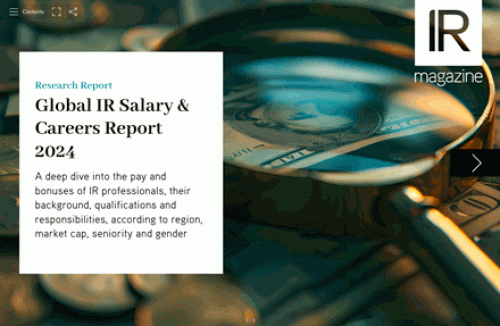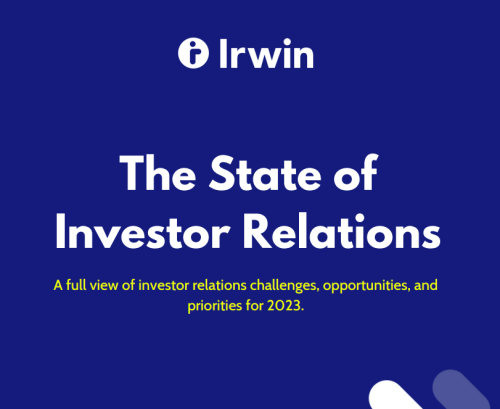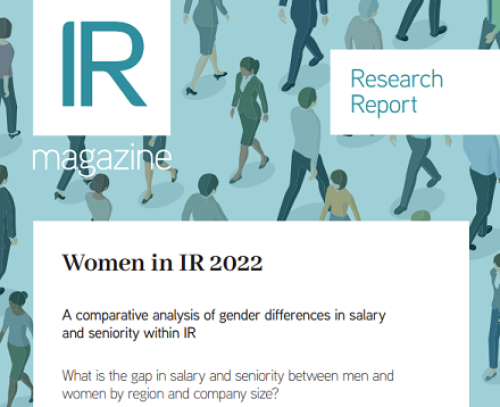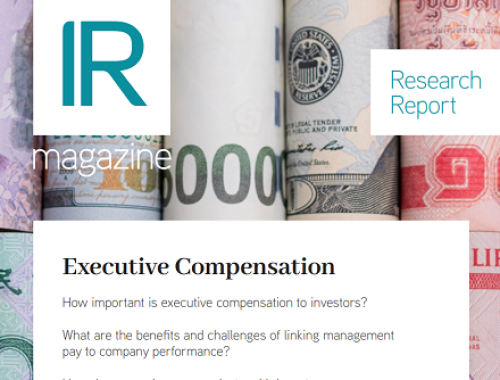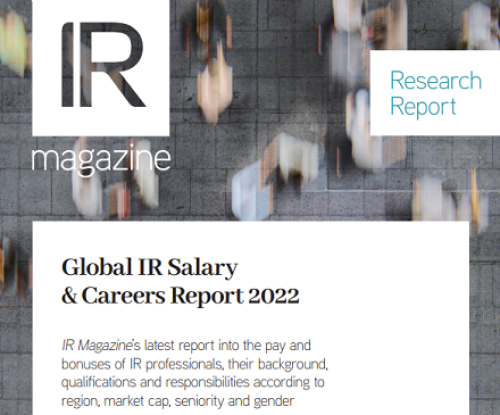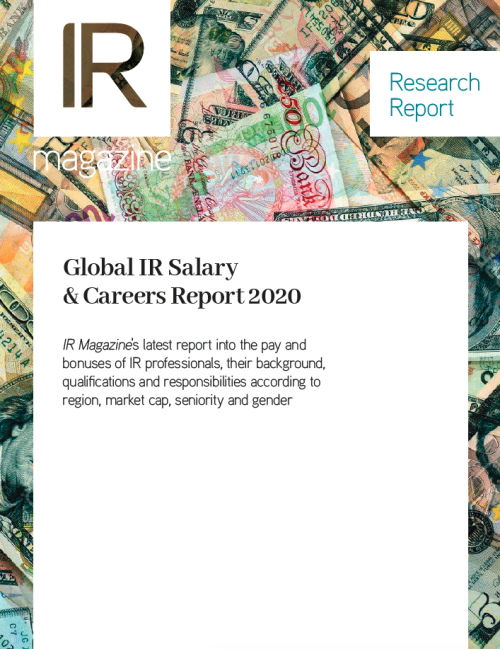Research shows higher percentage of women make it to top jobs in consumer and healthcare sectors
Earlier this year IR Magazine published research demonstrating that while the number of men and women working in IR is roughly equal, men take two thirds of department head roles.
We’ve now drilled down to see how the gender split plays out across different sectors. The findings reveal the best and worst sectors for promoting women into senior IR roles. The research, based on a global survey of more than 1,300 IR professionals, reveals that technology (including communications) and energy & utilities have the lowest proportion of women running IR departments.
IR gender split in IRO and IR head roles, by sector:
| Sector | IROs | IR heads | |||
| Male | Female | Male | Female | ||
| Consumer | 29% | 71% | 50% | 50% | |
| Energy & utilities | 53% | 47% | 81% | 19% | |
| Financials (inc real estate) | 60% | 40% | 67% | 33% | |
| Healthcare | 33% | 66% | 52% | 48% | |
| Industrials | 48% | 52% | 73% | 27% | |
| Materials | 53% | 47% | 71% | 29% | |
| Technology (inc communicationss) | 47% | 53% | 83% | 17% |
In the technology sector, more than half of IRO respondents are women. But among head of IR roles in the sector the proportion of women falls to just 17 percent. Energy & utilities does only slightly better with 19 percent of departments run by women.
The trend does not extend to two of the largest tech companies, however: Google’s parent company Alphabet and Cisco both have IR departments with women at the helm.
The technology sector is already in the spotlight for poor gender diversity. At almost half of tech firms, women hold less than 25 percent of senior management roles, according to a study published last year by Tech London Advocates. The sector’s image received further damage in August when a Google employee authored a widely circulated manifesto against positive discrimination at the search giant. The engineer was later fired.
Energy is another sector noted for its lack of diversity. Within oil and gas, women make up less than 20 percent of the global workforce, and less than 15 percent of senior positions, according to the World Economic Forum.
The consumer sector, which in our research combines consumer staples and consumer discretionary, reports the highest level of gender equality among senior IR roles, with men and women each taking 50 percent of top jobs. Next comes healthcare, where 48 percent of departments are female-led.
But these departments have very high proportions of female IR professionals overall, with women far outnumbering men among IRO staff. That suggests sectors need to have far more women than men at IRO level to lead to an equal split at department-head level.
The same issues hold women back across the business world but they are more acute in certain industries, says Pavita Cooper, founder at talent and diversity firm More Difference, who also sits on the steering committee at the 30% Club, which campaigns for more women on boards.
‘You see large numbers of women entering into the workforce – any sector – and then you see this drop off, particularly in sectors like financial services and pharma, and it’s pretty quick,’ she says.
Two of the main barriers to more women in senior roles are corporate cultures and hiring bias, explains Cooper. ‘Women leave cultures. They leave bosses. They leave environments they feel are not conducive to the way they want to work,’ she says.
‘It’s also about implicit bias around selection, hiring in your own mirror image when making promotion decisions. There are very few women at the top and you’re joining a cohort where it’s predominantly men, so it’s harder to break in.’


